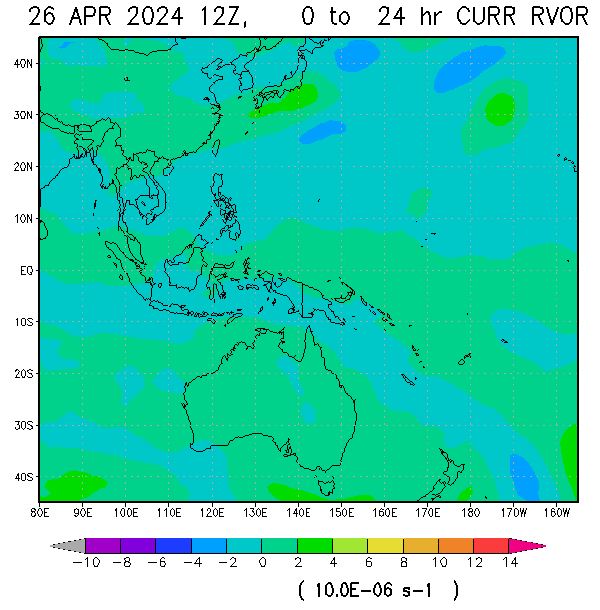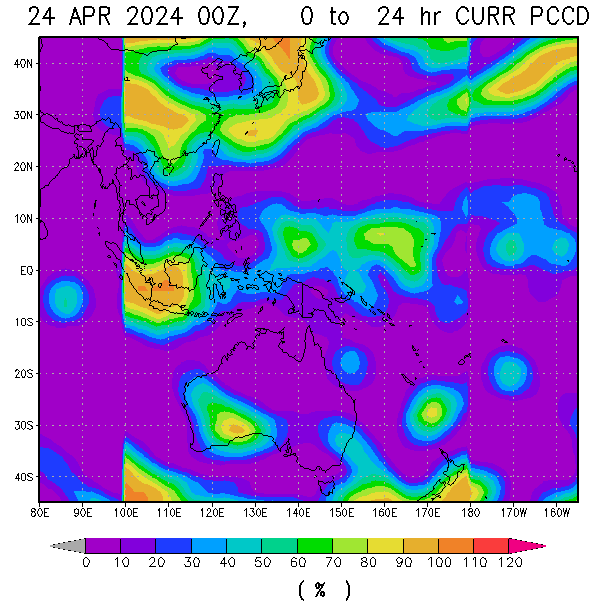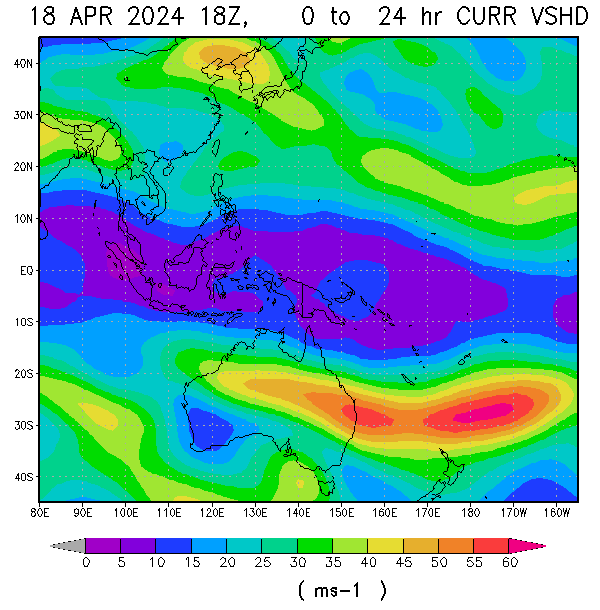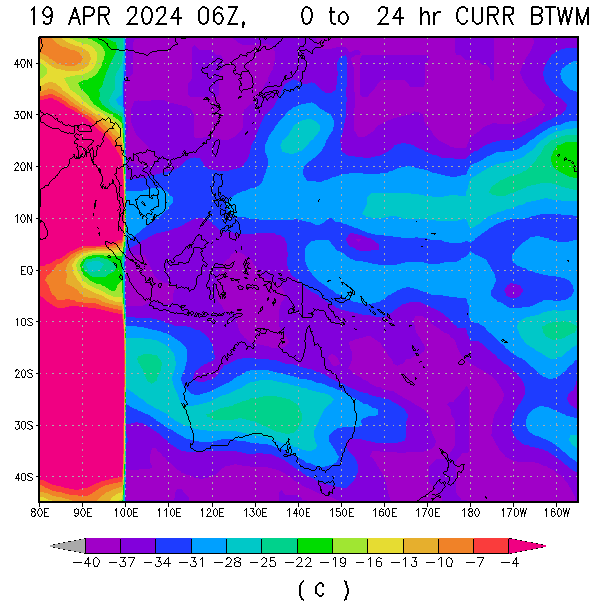Selected parameter: Monthly TRMM 3B43(V6) Accumulated Rainfall
Selected area: lat=[14.30N,14.70N], lon=[120.85E,121.20E]
METRO MANILA
Unit: (mm)
JAN-MARCH 2010
Latitude Longitude AccRain
14.300 120.850 33.3603**
14.300 121.100 118.5990
14.550 120.850 36.9153
14.550 121.100 123.8150
JAN-MARCH 2009
Latitude Longitude AccRain
14.300 120.850 127.3960
14.300 121.100 430.6200
14.550 120.850 141.2950
14.550 121.100 456.2110
JAN-MARCH 2008
Latitude Longitude AccRain
14.300 120.850 180.8070
14.300 121.100 484.0580*
14.550 120.850 186.3120
14.550 121.100 475.4030
JAN-MARCH 2007
Latitude Longitude AccRain
14.300 120.850 155.2460
14.300 121.100 342.9180
14.550 120.850 148.4360
14.550 121.100 340.8100
JAN-MARCH 2006
Latitude Longitude AccRain
14.300 120.850 157.7340
14.300 121.100 382.1860
14.550 120.850 181.5360
14.550 121.100 399.5150
JAN-MARCH 2005
Latitude Longitude AccRain
14.300 120.850 63.2183
14.300 121.100 91.5397
14.550 120.850 46.4131
14.550 121.100 118.1730
JAN-MARCH 2004
Latitude Longitude AccRain
14.300 120.850 71.6025
14.300 121.100 191.2130
14.550 120.850 69.7211
14.550 121.100 190.5610
JAN-MARCH 2003
Latitude Longitude AccRain
14.300 120.850 35.6987
14.300 121.100 124.5990
14.550 120.850 37.8541
14.550 121.100 122.1030
JAN-MARCH 2002
Latitude Longitude AccRain
14.300 120.850 59.5048
14.300 121.100 162.1750
14.550 120.850 56.9598
14.550 121.100 157.9130
JAN-MARCH 2001
Latitude Longitude AccRain
14.300 120.850 210.2580
14.300 121.100 361.7220
14.550 120.850 219.5190
14.550 121.100 353.3610
JAN-MARCH 2000
Latitude Longitude AccRain
14.300 120.850 220.6630
14.300 121.100 374.5130
14.550 120.850 206.8840
14.550 121.100 356.6490
JAN-MARCH 1999
Latitude Longitude AccRain
14.300 120.850 233.5450
14.300 121.100 473.4600
14.550 120.850 199.9410
14.550 121.100 457.0470
JAN-MARCH 1998
Latitude Longitude AccRain
14.300 120.850 41.1616
14.300 121.100 84.3404
14.550 120.850 48.6213
14.550 121.100 99.7309
Selected parameter: Monthly TRMM 3B43(V6) Accumulated Rainfall
Selected area: lat=[14.30N,14.70N], lon=[120.85E,121.20E]
METRO MANILA
Unit: (mm)
APR-JUNE 2010
Latitude Longitude AccRain
14.300 120.850 258.4010
14.300 121.100 255.4740
14.550 120.850 272.6250
14.550 121.100 274.351
APR-JUNE 2009
Latitude Longitude AccRain
14.300 120.850 1049.9700*
14.300 121.100 1024.6700
14.550 120.850 1034.6800
14.550 121.100 1027.5700
APR-JUNE 2008
Latitude Longitude AccRain
14.300 120.850 608.5740
14.300 121.100 705.5700
14.550 120.850 582.9530
14.550 121.100 719.5320
APR-JUNE 2007
Latitude Longitude AccRain
14.300 120.850 280.4160
14.300 121.100 325.8420
14.550 120.850 240.4810**
14.550 121.100 323.1980
APR-JUNE 2006
Latitude Longitude AccRain
14.300 120.850 341.7580
14.300 121.100 360.1560
14.550 120.850 343.3860
14.550 121.100 386.2450
APR-JUNE 2005
Latitude Longitude AccRain
14.300 120.850 337.2930
14.300 121.100 367.8230
14.550 120.850 399.5850
14.550 121.100 446.3260
APR-JUNE 2004
Latitude Longitude AccRain
14.300 120.850 704.5040
14.300 121.100 498.4870
14.550 120.850 740.1190
14.550 121.100 518.7470
APR-JUNE 2003
Latitude Longitude AccRain
14.300 120.850 651.4490
14.300 121.100 610.7400
14.550 120.850 674.6310
14.550 121.100 644.4280
APR-JUNE 2002
Latitude Longitude AccRain
14.300 120.850 252.2220
14.300 121.100 282.6960
14.550 120.850 252.5050
14.550 121.100 283.2420
APR-JUNE 2001
Latitude Longitude AccRain
14.300 120.850 539.0730
14.300 121.100 563.4520
14.550 120.850 536.9810
14.550 121.100 551.4270
APR-JUNE 2000
Latitude Longitude AccRain
14.300 120.850 533.4440
14.300 121.100 502.8780
14.550 120.850 634.7290
14.550 121.100 572.4050
APR-JUNE 1999
Latitude Longitude AccRain
14.300 120.850 479.8550
14.300 121.100 573.4910
14.550 120.850 531.3320
14.550 121.100 565.0510
APR-JUNE 1998
Latitude Longitude AccRain
14.300 120.850 289.4390
14.300 121.100 291.7880
14.550 120.850 276.5680
14.550 121.100 281.2440
Selected parameter: Monthly TRMM 3B43(V6) Accumulated Rainfall
Selected area: lat=[14.30N,14.70N], lon=[120.85E,121.20E]
METRO MANILA
Unit: (mm)
JULY-SEPT 2010
Latitude Longitude AccRain
14.300 120.850 956.0910
14.300 121.100 886.8390
14.550 120.850 941.4060
14.550 121.100 937.2600
JULY-SEPT 2009
Latitude Longitude AccRain
14.300 120.850 1407.7900
14.300 121.100 1286.2500
14.550 120.850 1452.6600
14.550 121.100 1368.1600
JULY-SEPT 2008
Latitude Longitude AccRain
14.300 120.850 1194.7300
14.300 121.100 924.0140
14.550 120.850 1263.2200
14.550 121.100 989.5200
JULY-SEPT 2007
Latitude Longitude AccRain
14.300 120.850 1333.2800
14.300 121.100 978.1810
14.550 120.850 1349.9000
14.550 121.100 1029.6900
JULY-SEPT 2006
Latitude Longitude AccRain
14.300 120.850 1257.1400
14.300 121.100 977.9360
14.550 120.850 1283.7300
14.550 121.100 1019.3400
JULY-SEPT 2005
Latitude Longitude AccRain
14.300 120.850 1095.6000
14.300 121.100 993.5760
14.550 120.850 1146.7400
14.550 121.100 1036.7600
JULY-SEPT 2004
Latitude Longitude AccRain
14.300 120.850 967.7300
14.300 121.100 840.6040
14.550 120.850 1033.8600
14.550 121.100 976.7180
JULY-SEPT 2003
Latitude Longitude AccRain
14.300 120.850 1207.7900
14.300 121.100 1030.5600
14.550 120.850 1337.9200
14.550 121.100 1162.0200
JULY-SEPT 2002
Latitude Longitude AccRain
14.300 120.850 1683.1000
14.300 121.100 1578.7800
14.550 120.850 1729.4500*
14.550 121.100 1702.2300
JULY-SEPT 2001
Latitude Longitude AccRain
14.300 120.850 980.3590
14.300 121.100 912.1410
14.550 120.850 1022.3500
14.550 121.100 967.1510
JULY-SEPT 2000
Latitude Longitude AccRain
14.300 120.850 1392.3200
14.300 121.100 1251.9600
14.550 120.850 1467.4200
14.550 121.100 1342.4800
JULY-SEPT 1999
Latitude Longitude AccRain
14.300 120.850 1383.7200
14.300 121.100 1154.1400
14.550 120.850 1470.1800
14.550 121.100 1227.7000
JULY-SEPT 1998
Latitude Longitude AccRain
14.300 120.850 796.3970
14.300 121.100 736.2750**
14.550 120.850 833.6810
14.550 121.100 789.0940
*Highest rainfall
**Lowest rainfall
JUST VOTE OR COMMENT FOR FEEDBACK


























